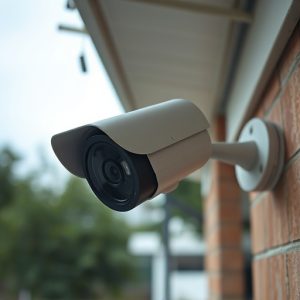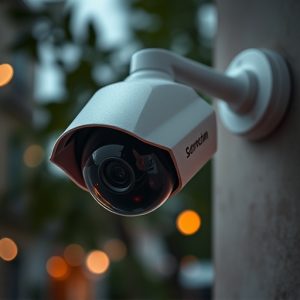Mastering Fake Camera Placement: Strategies for Deterrence & Legal Considerations
Strategic placement of realistic fake security cameras deters crime by creating a perception of cons…….
Strategic placement of realistic fake security cameras deters crime by creating a perception of constant surveillance. Key locations include entry points, windows, and valuable assets, with open and hidden mounting techniques for maximum deterrence. Blend brackets with surroundings, test lighting conditions, and respect legal boundaries while maintaining ethical practices to mount fake security cameras effectively.
“Uncover the power of deception with our guide on how to mount fake security cameras effectively. We explore the psychology behind their placement, revealing how potential criminals can be deterred by strategic positioning. Learn the art of choosing discreet yet powerful locations for maximum impact. From technical mounting techniques to understanding legal boundaries and ethical considerations, this article provides a comprehensive step-by-step guide on ‘How to Mount Fake Security Cameras’ for enhanced home or business security.”
- Understanding the Psychology Behind Fake Security Camera Placement
- Choosing the Right Locations for Maximum Deterrence
- Techniques for Discreet and Effective Mounting
- Legal Considerations and Ethical Implications of Using Fake Cameras
Understanding the Psychology Behind Fake Security Camera Placement
Understanding the psychology behind fake security camera placement is key to an effective strategy. Criminals are often deterred by the mere presence of surveillance equipment, even if it’s simulated. The perception of constant observation can significantly alter behavior, making individuals less likely to engage in illegal activities. By strategically placing fake cameras in visible areas, you create a psychological barrier that enhances security without the need for extensive physical surveillance infrastructure.
When learning how to mount fake security cameras, consider both realism and placement. These devices should look and feel authentic to fool potential intruders. Mounting them at eye level or slightly elevated angles, similar to real security equipment, can maximize their deterrent effect. Positioning them near entry points, windows, and valuable assets sends a clear message that any attempt at unauthorized access will be closely watched.
Choosing the Right Locations for Maximum Deterrence
When planning where to mount fake security cameras, understanding human behavior and common crime patterns is key. Strategically placing these realistic replicas in visible areas can significantly deter potential criminals. Consider high-risk zones like entry points, ATMs, or parking lots where thieves might target valuable items or sensitive information.
The ‘how to mount fake security cameras’ approach involves using both plain sight and hidden locations. While some fakes can be placed openly on poles or walls, others should be strategically hidden behind trees, signs, or other structures. This creates an aura of constant surveillance, making would-be criminals think twice before attempting any illicit activities.
Techniques for Discreet and Effective Mounting
When mounting fake security cameras, discretion is key. Strategically place them in plain sight, mimicking the location and angle of real security equipment. Use mounting brackets that blend with surrounding fixtures, like walls or ceilings, avoiding metal or reflective surfaces that can reflect light and give away their artificial nature. Aim for high-traffic areas, entrances, and exits, while ensuring clear line-of-sight visibility.
Consider the camera’s field of view (FOV) when deciding on placement. Wider FOVs cover more ground but may require multiple cameras to achieve full area surveillance. Narrower FOVs offer sharper detail at closer ranges. Test your setup during different times of day, considering shadows and lighting conditions that might affect image quality. Regularly adjust camera angles for optimal visual coverage, ensuring no blind spots exist in your simulated security network.
Legal Considerations and Ethical Implications of Using Fake Cameras
The placement of fake security cameras, while seemingly straightforward, involves a delicate balance between effective deterrence and legal compliance. When mounting fake cameras, it’s crucial to understand that their strategic positioning should not infringe upon privacy rights or create false sensations of security for occupants.
In many jurisdictions, there are strict laws regarding surveillance and observation, particularly in public spaces and homes. Using fake cameras must adhere to these regulations, which often mandate clear signage indicating the presence of recording devices and specific conditions under which recordings can be used legally. Moreover, ethical considerations come into play when employing deception as a security measure, emphasizing transparency and respect for individuals’ rights to privacy.
Implementing a strategic fake security camera placement strategy not only enhances physical security but also serves as a powerful deterrent for potential intruders. By understanding human behavior and choosing the right locations, you can maximize their effectiveness. Discreet mounting techniques ensure these cameras blend into the environment while capturing clear footage. However, it’s crucial to consider legal boundaries and ethical implications to avoid any privacy infringements. With the right approach, learning How to Mount Fake Security Cameras can significantly contribute to creating a safer living or working space.


